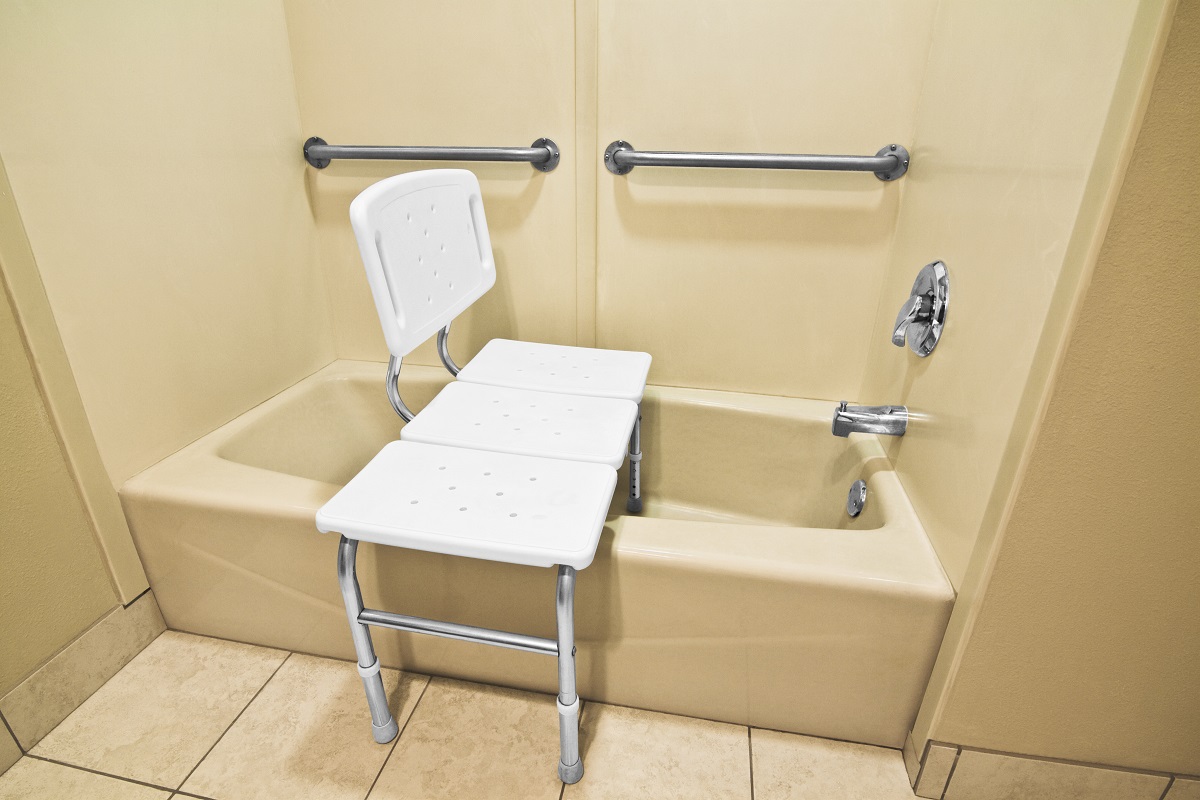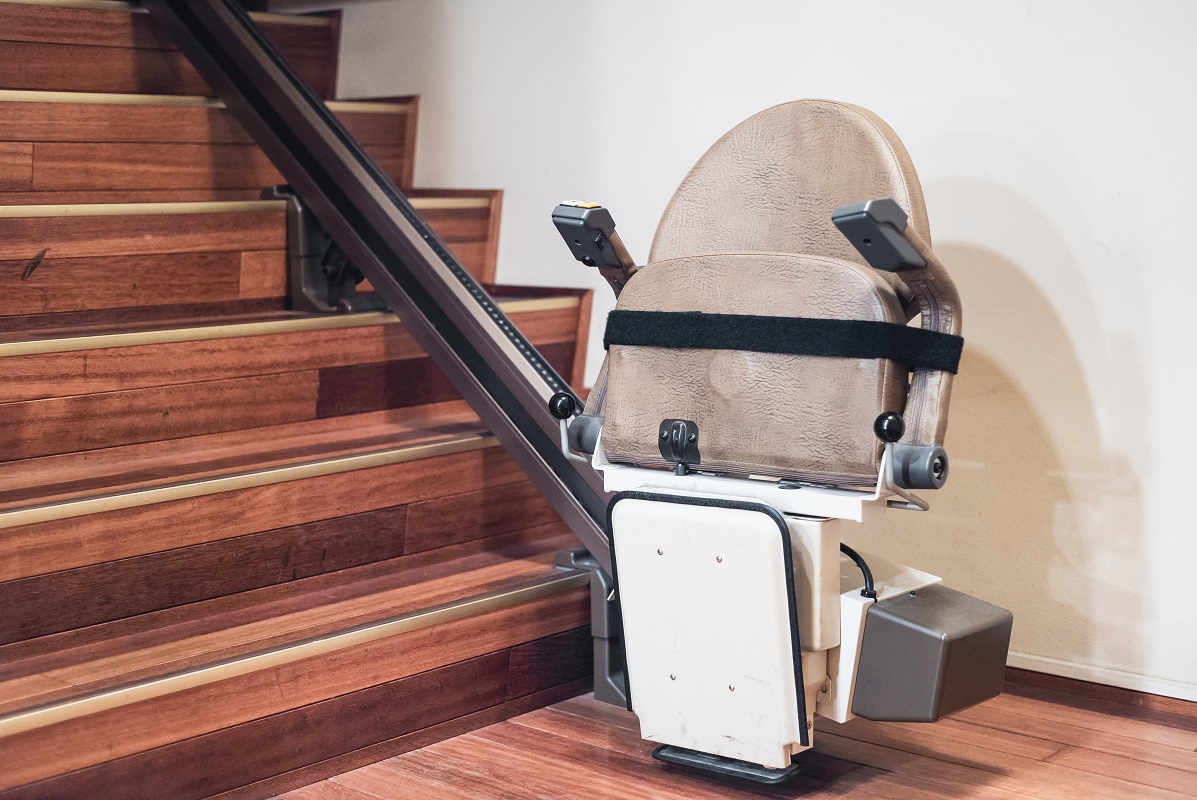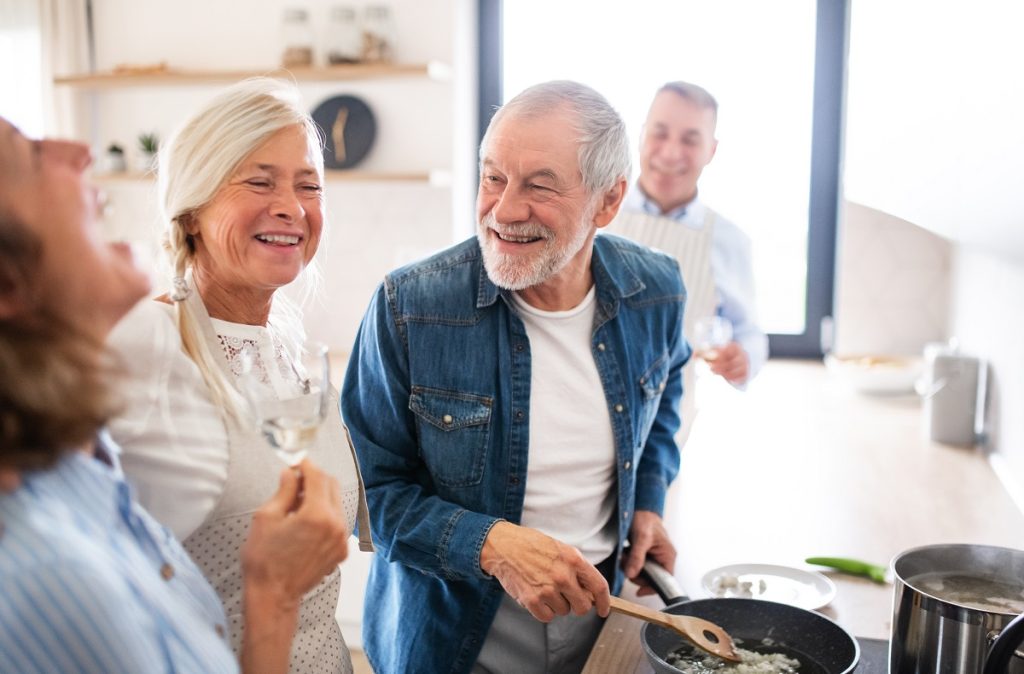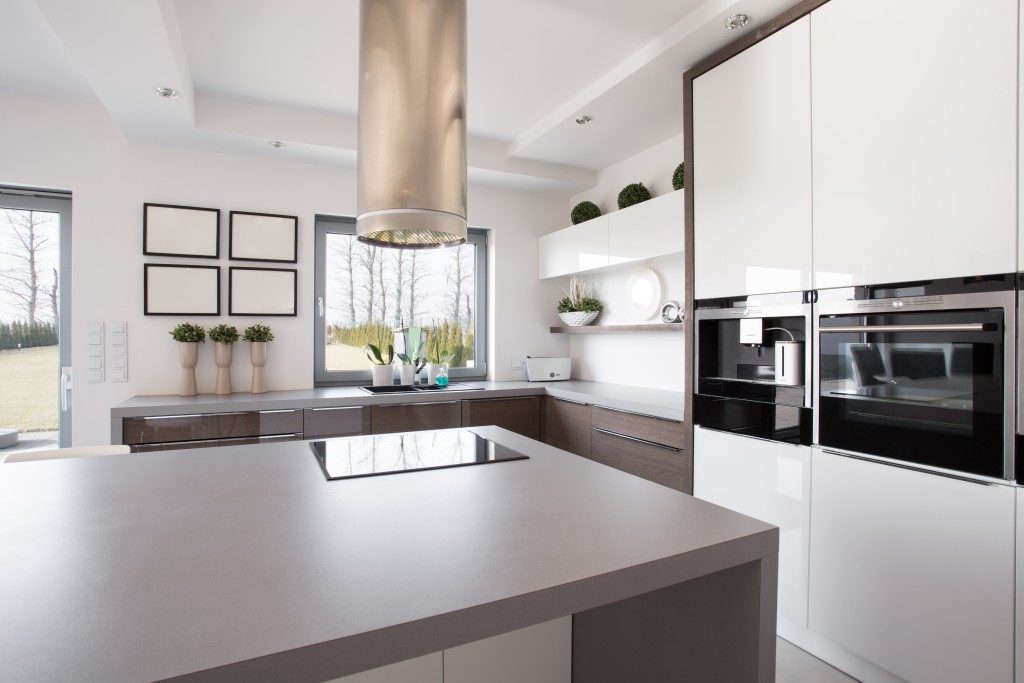- Install grab bars and handrails in bathrooms, stairs, bedrooms, living areas, and kitchens.
- Reduce falls and injury risks by providing support when performing everyday tasks like getting out of bed or transferring from a wheelchair to a toilet/shower seat.
- Cover sharp edges and furniture corners with edge covers or padding to protect from bumps & bruises.
- Remove tripping hazards such as rugs & secure them with anti-skid pads.
- Invest in additional safety devices like motion sensors and stairlifts for extra protection.
Seniors are especially vulnerable when it comes to safety at home. According to the Centers for Disease Control and Prevention, falls are the primary causes of injuries among seniors, with over 3 million people visiting the emergency room each year. Falls can be fatal — they account for more than 95% of hip fractures and over 30% of fatalities due to all types of injuries among seniors.
These statistics underscored the importance of protecting elderly family members and loved ones at home. You can help ensure their safety and well-being with a few simple steps. Here are a few of the best projects to consider for senior safety at home:
Grab Bars and Handrails

Grab bars and handrails are essential for senior safety at home. They help ensure balance and stability when navigating stairs, entering or exiting the bathtub, or engaging in other activities. Installing grab bars and handrails also provides much-needed support when performing everyday tasks like getting out of bed, transferring from a wheelchair to a toilet or shower seat, and more. Seniors can reduce falls and serious injury risks by installing these fixtures.
The following are a few areas where grab bars and handrails should be installed:
Bathrooms
Bathroom safety is essential for elderly individuals at home. Grab bars should be installed near tubs, showers, toilets, and vanities. Install them horizontally around the shower walls or tub sides so that people can hold onto them while standing up in the shower or sitting on the tub’s edge. Additionally, it’s best to install grab bars next to toilets – higher up on the wall near arm level and lower down close to knee level – so that people can use them for full body support when transferring onto and off the toilet seat.
Stairs
Handrails are essential for senior safety at home when going up or down stairs. Railings prevent falls by providing something to hold onto while walking up or down stairs – especially if they’re steep or unevenly spaced. Install bars along both sides of all staircases in your home, ensuring they extend from top to bottom with no gaps between steps. Additionally, ensure they’re securely fastened into wall studs and have a texture that won’t slip easily (such as rubber coating).
Bedrooms & Living Areas
It’s just as important to keep seniors safe in their bedrooms and living areas too! Handrails should be installed beside beds so that older adults have something stable to grab onto when getting in/out of bed – this is especially helpful for those who do not have much upper body strength or balance issues due to conditions like vertigo. Additionally, consider installing grab bars alongside furniture items like armchairs so seniors can use them.
Kitchen
In addition to installing grab bars near high-risk areas such as stoves and ovens, it’s a good idea to add handrails along counters too – especially if those counters wrap around corners – so that senior citizens have something sturdy to hold onto while preparing meals or doing other kitchen activities safely. If your loved one enjoys cooking outside, consider adding additional safety features like non-skid mats and ramps for wheelchairs/scooters that provide increased stability on patios and decks adjacent to kitchens outdoors too!
Stairlift

Stairlifts are incredibly important for elderly individuals with difficulty going up or down stairs due to physical disabilities, arthritis, balance issues, and other mobility limitations. Installing a stairlift in the home can be life-changing for seniors as it allows them to easily access different parts of their home while reducing fall risks.
Stairlifts provide an easy and safe way to navigate stairs without fear of slipping or falling. They feature comfortable seats that slowly raise and lower users along the staircase rail, giving them support and stability throughout their ascent/descent. Stairlift chairs also have features like seatbelts for additional security, footrests that flip up when not in use, and stops at both the top and bottom of the staircase. Additionally, many modern stairlift models offer customization options like adjustable speed controls to suit individual user needs.
Sharp Edge Covers
Sharp corners and edges are a severe safety hazard for elderly individuals who may be at risk for falls. To protect your loved ones from injury, it’s essential to cover any sharp edges or furniture corners with edge covers or other protective padding. These safeguards can help reduce the risk of bumps, bruises, and more severe injuries among seniors at home.
Furniture or decorations made of glass might also have to go, especially near walkways. All fallen rugs and other tripping hazards should be removed or secured with anti-skid pads to ensure seniors don’t slip around the house.
Finally, consider installing additional safety features like motion sensors that alert you when someone needs help getting up from a fall and devices such as pressure mats that will trigger an alarm if they detect a person lying in the same position for too long. These extra measures can provide peace of mind knowing that your elderly family member is safe and cared for at home.
Final Thoughts
Creating a safe, secure home environment for seniors is essential to reducing the risk of falls and other injuries. By installing grab bars and handrails in high-risk areas, covering sharp edges, removing tripping hazards, and investing in additional safety devices like stairlifts and motion sensors, you can help ensure your elderly loved one’s safety at home. With these simple steps, you can protect your older family members from harm – preserving their health and well-being.



